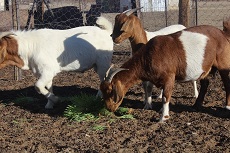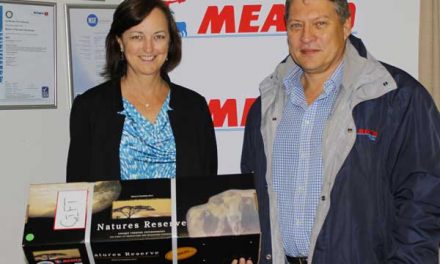
Smallstock farmers follow this advice for winter lambing season – expert

By Erastus Ngaruka of Agribank.
With the start of winter, small stock (goats and sheep) farmers have a big task at hand to ensure that this lambing (sheep birth) and kidding (goat birth) season progresses well to achieve their reproduction targets.
Generally, animals’ breeding activities take place during seasons or times most favourable to their bodily functions and wellbeing. For example, mating commences during times of plentiful forage amongst others, and this is because the nutritional status of the animal has a direct influence on conception. The better the nutritional status the higher the chance of conception. Well-maintained animals with good body condition will have higher reproductive performance (e.g. libido and fertility) than those with poor body condition.
The current lambing/kidding season results from December/January mating. Other lambing/kidding seasons include September/October and March/April, which in turn can be mating seasons.
Since the gestation period in both types is five months, farmers should expect their ewes (female sheep) and does (female goats) to commence with parturition (giving birth) at the onset of winter. This is the most demanding stage of the season where farmers must prepare to provide the necessary support to the ewes/does and ensure lambs’ and kids’survival. It is very important to ensure that the animals are not exposed to adverse health conditions, and that they are adequately fed throughout the season.
Most lambs/kids’ mortalities during winter result from cold stress, hunger and parasite infestation. Some of the health conditions in smallstock are predisposed by unhygienic kraal environments or conditions, filled with parasites, dust, dirt and harmful objects. Most of the times lambs and kids are kept in the kraals for long, and thus, directly exposed to these conditions. Dust inhalation and cold stress can result in lung infection (Pasteurellosis/Pneumonia), and eye infections when blown into the eyes.
Pasteurellosis is a respiratory disease caused by several species of bacteria (e.g. P. multocida and P. haemolytica) that inhabits the respiratory system (e.g. lungs) of the animal. The disease is predisposed by stress factors such as cold, dust, and transportation amongst others. The symptoms include, fast breathing, coughing, running nose, loss of appetite, and at post-mortem examination, the lungs are attached to the rib cage.
Pasteurellosis can be treated with the common antibiotics (e.g. Terramycin), and can be prevented by vaccinating the animals, and proper management of the stress factors. All adults and lambs and kids (2 weeks old) should be vaccinated against pasteurellosis.
Another mayor problem is internal and external parasite infestation. The most problematic external parasites are mites, lice and fleas. The common signs of infestation by these parasites is irritation (restless, head shaking, scratching or itching), hair loss, and anaemia (loss of blood) amongst others.
These parasites can be controlled or eradicated by dipping or spraying the animals with anti-parasitic remedies. Injectable solutions (e.g. Dectomax) can also be used. Internal parasites should also be controlled either with oral or injectable solutions.
During winter, extra care against the cold is needed. A shelter or a housing structure can be constructed especially for the most vulnerable animals to protect or keep them warm. One of the cheapest and simplest practices is to dig a trench in the ground to keep the lambs/kids overnight.
Generally, animals generate or increase their body heat through metabolism, therefore it is advisable to ensure that your goats and sheep have enough roughage in their fodder (e.g. lucerne hay) all the time during winter.
In conclusion, the survival and performance of your animals depend on your timely management interventions. This starts with the preparation of the breeding stock for mating, care during gestation and parturition, and caring for the young up to weaning. This includes a supply of enough feed and water throughout, carrying out all necessary vaccinations, protecting against adverse environmental conditions, and maintaining a clean farm/kraal environment.
All necessary equipment and remedies must be acquired in advance to be able to provide first aid when complications arise. For example, antibiotics for bacterial illnesses or conditions such as, retained placentas, diarrhoea, eye infections, and navel infection, amongst others, should be available all the time.
Compiled by Mr. Erastus Ngaruka, Technical Officer: Livestock in Agribank’s Agri Advisory Services division.











































